Festive cuisine differs by region, which results in a unique and celebratory feature of Vietnamese culture.
The
curves of this S-shaped land embrace its tri-regions, namely Vietnam North,
Central Coasts and South, each of which boasts exclusive patterns in their own
festive cuisine to celebrate the cultural diversity. Through ups and downs,
these true values and profound implications of traditional festivities remain
intact in several layers of Vietnamese lifestyle.
The exquisite
Northern style
Speaking
of Tet food in the North, banh chung always makes the top of the list. The
glutinous rice cake with mung bean and pork belly filling, wrapped in dong
(phrynium leaves) has been long playing an important role in the history of
Vietnamese communities. The scene of all family members gathering around a hot
stove with the boiling banh chung pot on top has a special effect in releasing
one’s mind from the hustle and bustle of life. As part of a traditional Tet
meal, banh chung is usually served with pickled onion.
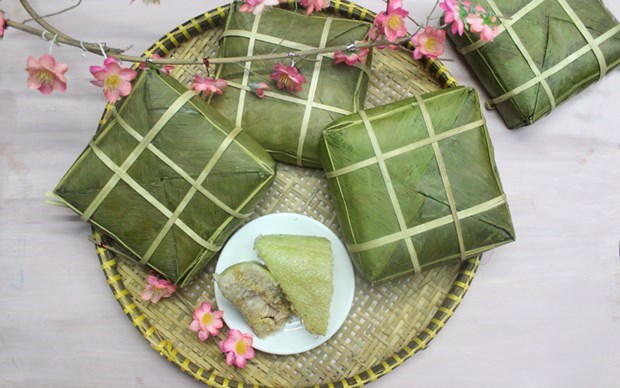
Banh chung by all means becomes the most typical dish of Northern style feast.
Thit
dong, or meat jelly, is a familiar dish that best represents the Northern
cuisine in this festive season. The dish contains pork or pork leg, black
fungus and black pepper. Sometimes pork rind and agar are added. The dish is
usually served cold, straight from the fridge with hot rice, which produces an
icy, tingly feeling at the tongue tip. Having meat jelly with banh chung and
pickled onion is all one drools for on Tet holiday.
Red
sticky rice, or xoi gac, is among fascinating sides for Tet’s Northern style
offerings. Starting from the 12th month of the lunar calendar, when most
families are busy shopping for Tet, ladies go to the markets to buy some
cochinchin gourds for their sticky rice recipe. The dish’s tangerine color
reflects a sumptuous wish for good luck through the coming year. Over the
altar, the vibrant reddish hue immerses itself with other dishes’ colorful
presentation to create such a delicious canvas of traditional cuisine.
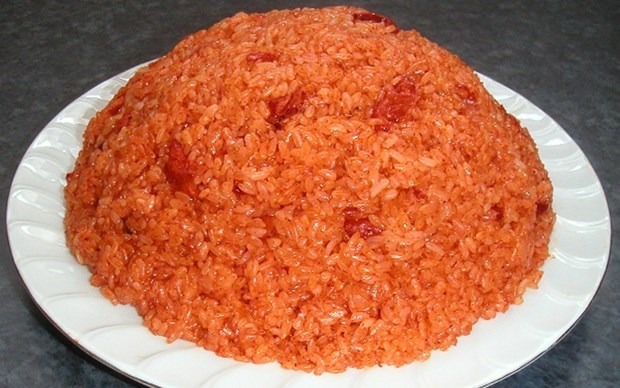
Xoi gac represents good luck in a Tet-themed banquet table.
Fried
spring roll (or cha gio in the South) is a special kind of entrée in Vietnamese
cuisine and a typical dish for Tet in the North. Bite-sized chunks of meaty
filling in golden brown rice paper are deep fried. The splendid combination of
pork, beaten egg, black fungus and bean sprout is dubbed one of Vietnamese
national dishes.
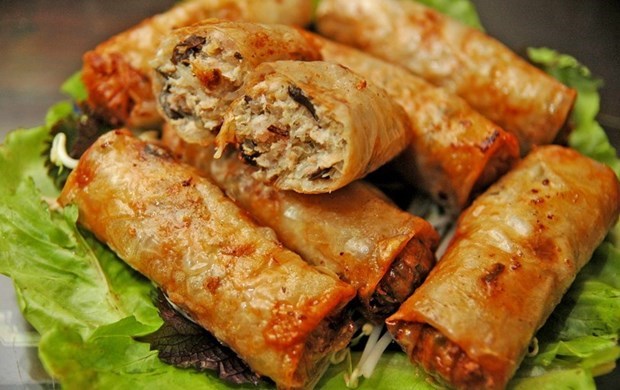
Fried spring roll is dubbed one of the national dishes.
The bold Southern
style
During
Tet, when banh chung is the North’s pride, the South is elated to present banh
tet. Despite a similar set of ingredients, banh tet differs from banh chung by
the wrapping, which makes use of banana leaves instead of dong. Besides mung
bean and pork belly, its filling also varies with black cowpea, banana or mix.
Banh tet is usually prepared a half month in advance. After presenting on the
altar as offerings to ancestors, the rest are used to gift. Banh tet is often
served with braised pork, pickled takana and rakkyo to bring out distinct
flavours.
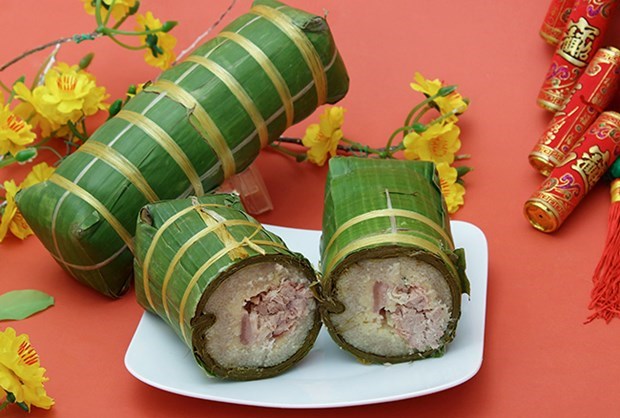
Banh tet is the Southern version of banh chung.
According
to an old belief from the South, eating bitter gourd soup will get rid of
troubles and misfortune to start a new year of success. The soup is not
something to be missed out on when attending a Southern style feast. Bitter
gourd, as its name suggests, can challenge any diner’s palate, however, turns
out to have some healthy assets.
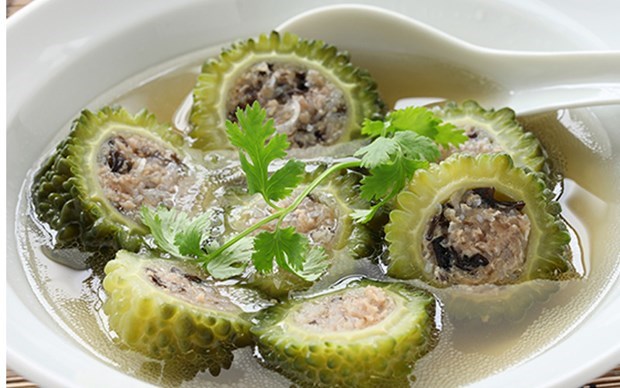
Stuffed bitter gourd soup is a good tonic recipe.
Similar
to pickled onion in the North, pickled rakkyo is Tet specialty of the South.
Fresh rakkyo is rinsed and sun-dried before placing in a clean jar with sugar.
The tightly capped jar is then put away for 10 days until shrunk in its own
juice. Pickled rakkyo is often served with dried shrimp. The humble side dish
has a sweet sour taste, along with its crispy texture, which turns on appetite
throughout the meal.
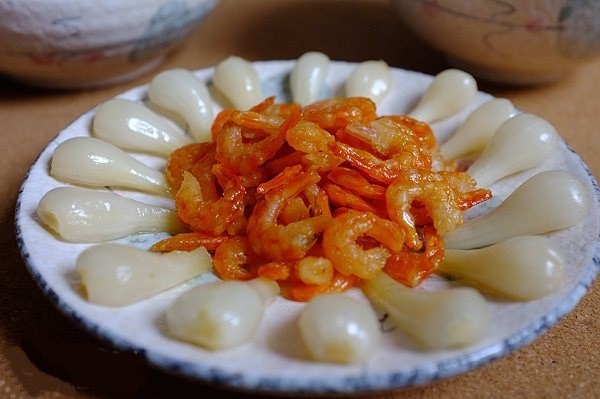
Pickled rakkyo is always among top choice for Tet traditional food in the South.
Braised
pork and egg is an inevitable dish on the table of Southern style meal. The
making of the dish is pretty easy for every family in this country. For
Southern people, the caramelized brown pork belly cubes are usually paired with
bitter gourd soup, which makes them the “happy couple” of Tet.
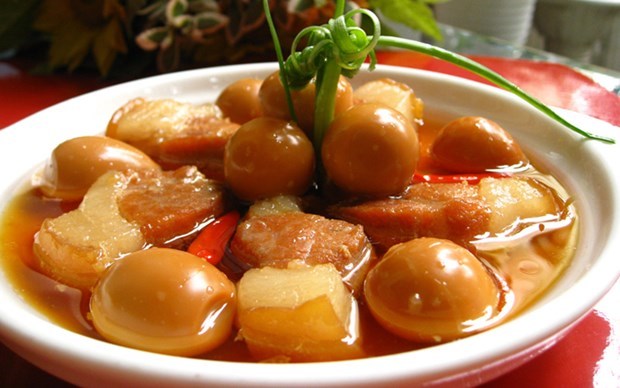
Braised pork belly and egg is usually paired with bitter gourd soup.
The abundant Central
style
People
from the Central Coasts also celebrate Tet with banh tet, just like the South.
Besides, they feature different types of cakes such as banh in (tapioca cake
with mung bean paste), banh to (sticky rice cake), banh la rang bua (steamed
rice cake).
Banh
in is a sweet snack originating from Binh Dinh Province. The recipe includes
sticky rice powder, which is easy to find and make into the most important
dessert on the offerings table during Tet. Rice grains are finely ground with
sugar and mung bean to create special sweets that represents a cultural aspect
of the middle land.
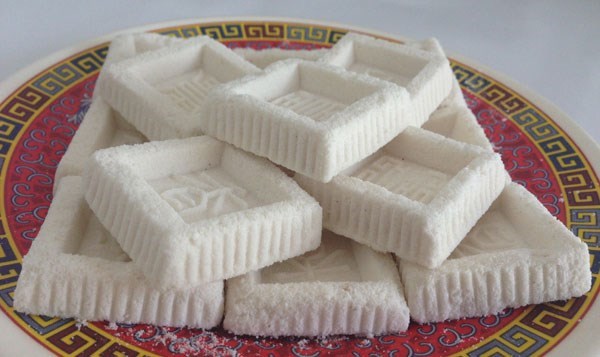
Banh in is one of the traditional snack of the Central Coasts.
In
Quang Nam, banh to is a cake for Tet. Its origin has been varied. Legend has it
that Chinese immigrants once called it “lung ku”, some say the cake comes from
the North of Vietnam, where Au Co – mother of all Vietnamese first taught them
to make it. Others argued this cake is one of offering items to the ancestors,
which makes up its name (to means “ancestors”). The key ingredients are sticky
rice, sugar, sesame and ginger.
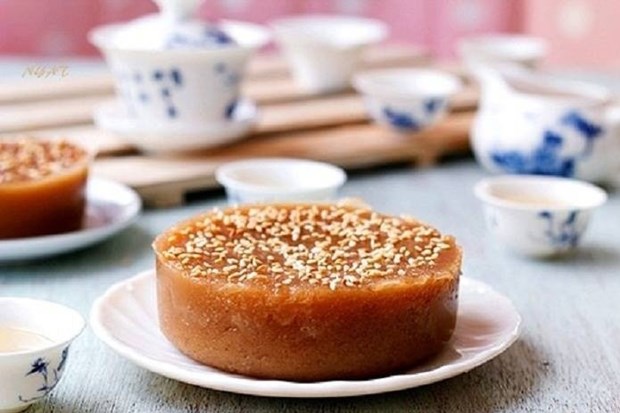
Banh to, which is a local Tet sweets, originated from Quang Nam.
Banh
la rang bua (plough hook cake), or banh te (steamed rice cake), earns its name
thanks to the shape. This is a traditional treat made only for every full moon,
prayer or Tet celebrations. The ingredients consist rice flour for wrapping
layer, along with fried shallot, minced pork belly, black fungus and black
pepper. The cake is served with fine fish sauce.
Besides
other traditional cakes, Tet meals in the Central also includes savoury treats
such as pickled daikon, tre (fermented pork rind), etc.
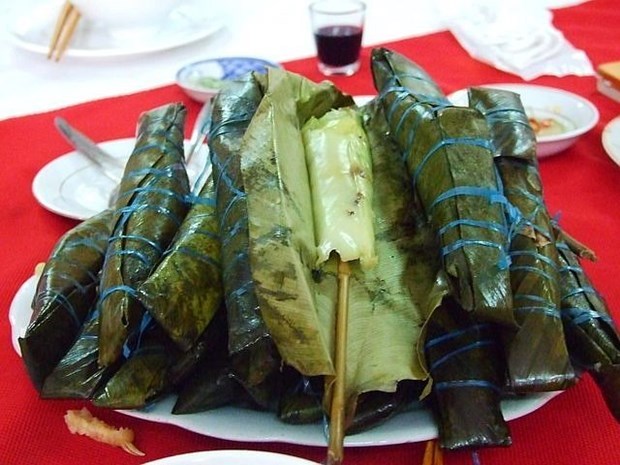
Thanh Hoa Province’s banh la rang bua.
During
Tet, Northern people serve banh chung with pickled onion, the Southern have
banh tet coupled with dried shrimp and pickled rakkyo, whereas, the Central
prefer banh tet to pair with pickled daikon. The dish has carrot, papaya,
cucumber, daikon and rakkyo as compartments, which are all brined and served as
crispy sides. That may sound simple but take a lot of time and dedication to
realize.
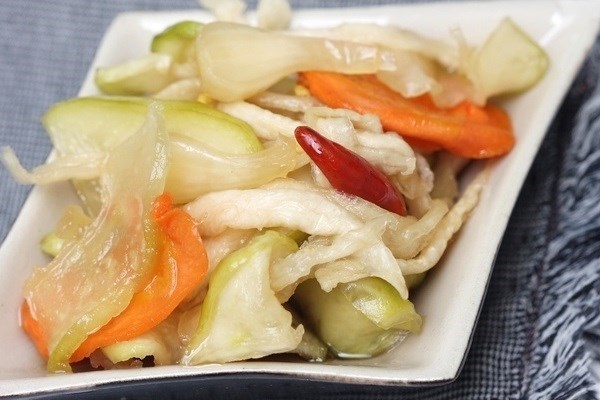
People from the Central Coasts prefer pickled daikon as Tet special treat.
Made
from inexpensive parts of a pig such as ears, nose, rind and pork belly, tre is
considered “food of the poor”. However, the fermented dish is always a melody
to the tongue. Despite different methods used, tre is a sumptuous combination
of salty, sweet, sour, spicy and astringent tastes. Tre is made in honor of
one’s ancestors as well as a good snack for cozy gatherings in the first days
of new year.
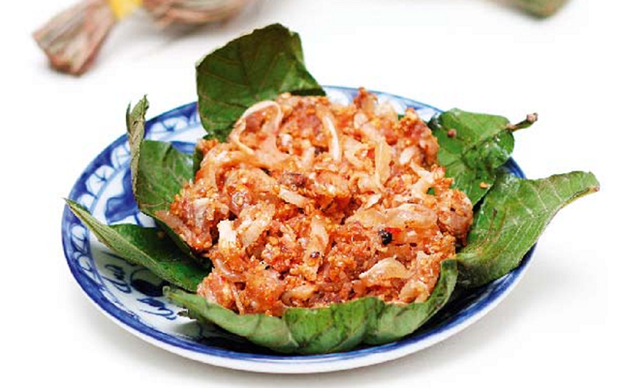
Tre is a typical dish from the Central Coasts during Tet holidays.
Writer: Lan Khue/ Nguoilaodong
Translator: Sandra Phan